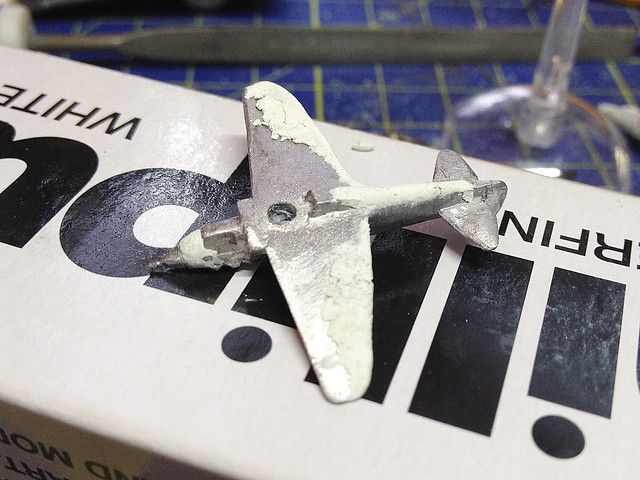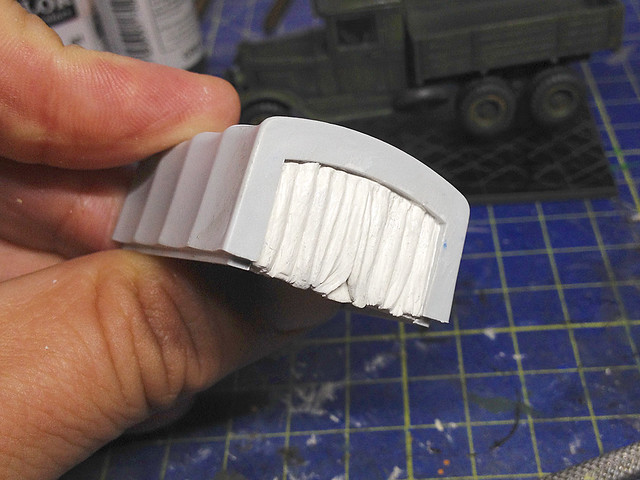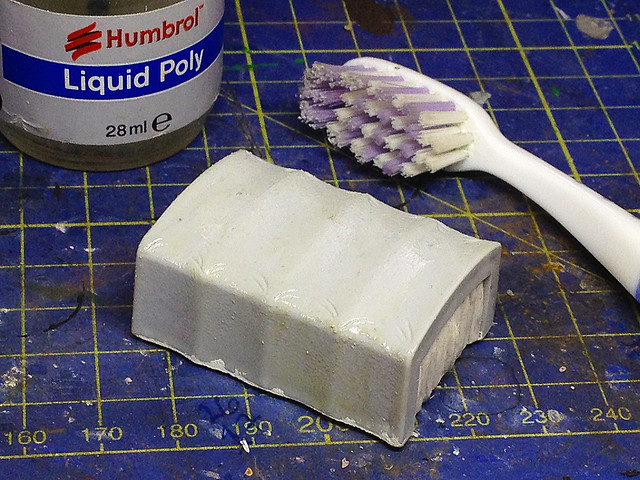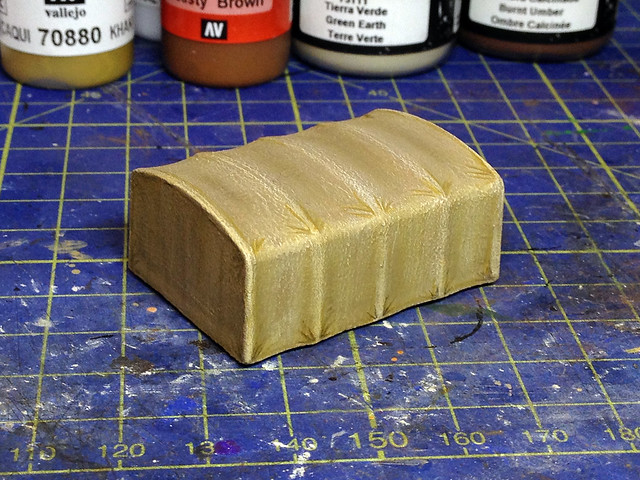The next truck in my 'Rapid Fire' Finnish Continuation War project will be a quick-build (hopefully). It's going to be a
very simple conversion intended to look like a
Volvo LV127 'Roundnose'. I've seen a few photos of these trucks being used by the Finns during WW2 and so decided to add another somewhat exotic make
(in that it's not readily available as a plastic kit) to to my already eclectic collection of Finnish logistics.
 |
| My next task - the Volvo LV-127 'Roundnose', 1943. Source: Wikipedia |
The "Roundnose" was introduced in the autumn of 1939, in conjunction with the outbreak of the Second World War. The truck was originally built in three versions. The smallest LV120-series had the same side-valve engine as the Sharpnose. The larger LV125-series and the sturdier LV130-series had the same overhead valve engine as its predecessor LV90.[2] During the war, many of these trucks were equipped with wood gas generators. [Source: Wikipedia]
The term
'Roundnose' was given to this design because of it's beautifully rounded grill and to differentiate it from it's predecessor, the so called
'Sharpnosed' Volvo truck. But you probably figured that one out yourselves!
These Swedish imports were classified as 'medium' class trucks and had 90hp petrol engines - this compared to the 76hp of the Opel Blitz and 95hp of the Ford V3000 V8 (which was probably the most numerous truck available to the Finns). So the Volvos provided the Finns with some much needed motorised muscle.
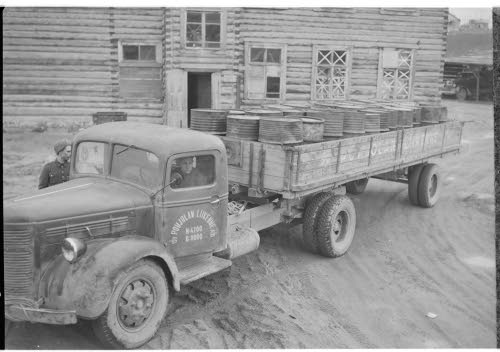 |
A wartime Finnish army Roundnose, still in it's original civilian commercial
markings. I have been unable to determine how many of these Swedish trucks
were civilian vehicles pressed into service and/or how many were specially
purchased for the Finnish army. Photo source: SA-Kuva |
The Conversion job
Ok, potted history over, how will I make my Volvo Round Nose? Well,
as simply as I can - I am not trying to make a display quality conversion here, so no refering to authentic blueprints and scratch building. Instead I intend a quick and dirty conversion of another truck kit which bears some superficial resemblance to the Volvo.
Simples!
Looking at photos of the Roundnose it immediately struck me that there was a vague similarity to the German Opel Blitz. By sheer co-incidence someone else had already had the same thought as I did. While searching for some reference on the Volvos I came upon this photo of a nearly identical conversion job in the
'Lead Adventure Forum'...
 |
| Source: A modeller going by the name of 'Hammers'. |
The modeller - who went by the username of
'Hammers' - seems to have come to the same conclusions as I have regarding a donor model and has built a 'round nose' onto an Opel Blitz model. His conversion was, according to the thread description, for a Swedish army vehicle and was in 1/48 scale.
My donor kit will be - in keeping with the quick build theme - a
Pegasus 'German Army Truck'. Few parts to muck about with, nice sturdy 'wargaming quality' construction...
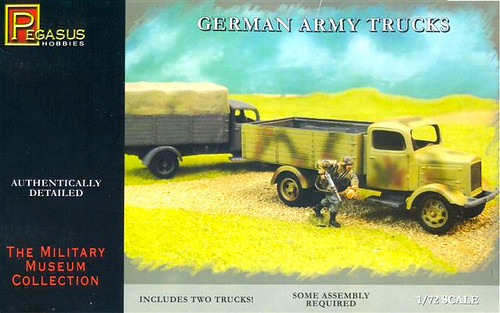 |
| Pegasus 'German Army Truck' - a simplified Opel Blitz type. |
Technical note: Pegasus's 'German Army Truck' - What is it? Not important for this project but there is something of a difference of opinion among modellers about just which truck Pegasus's model is supposed to represent. Many suppose it is a simplified Opel Blitz (Opel 3.6-36 S), but other's point out it bears a greater resemblance to the Mercedes L3000A, 3-ton, 4x4 truck.
 |
| The Mercedes L3000A 3-ton, 4x4, Cargo. Source: Unkown |
The main differences between the Volvo and my chosen donor is - or course - the bonnet and grill of either vehicle. To get my German Army Truck to look like the Volvo I will have to do five things:
1. Detach the current bonnet and grill section from the cab element.
2. Make a new firewall plate that sits between the bonnet and the cab.
3. Remake a new bonnet hood, narrowing it slightly and removing the side vents.
4. Make a new 'Roundnose' grill and fix it n the new bonnet.
5. Reattach new bonnet and grill onto the Pegasus 'German Army Truck' cab.
So, here we go. Let's make a Roundnose!
 |
| The Pegasus 'German Army Truck' cab and bonnet detail. |
Having separated the bonnet from the cab I now have to reconstruct the part of the cab where the bonnet joins it - as this are on the Volvo was flatter - and make a new bonnet that is slightly narrower and straighter than the German truck was. I began with a flat 'firewall' plate between the cab and the engine...
 |
I smoothed off the join between the firewall plate - plasticard - and the cab
and while I was at it I rounded out the windscreen with Milliput to make it
look a bit more Volvo. |
Next, trim the original German truck bonnet down - this isn't exactly the same shape as the Volvo's bonnet but we will fudge this! The German bonnet is more 'V' shaped (if you look at it from above) and comes down to a narrower grill, but to save a time-consuming scratch-build I will be reutilizing the old bonnet with some minor modifications.
 |
Chopped and smoothed off the old German Truck's bonnet back and front. The
gap between the cab and the bonnet will be filled and I'll start looking for a
cylindrical item to use to make the 'round nose'. |
The round nose will be the hardest part of the conversion I guess so I'll take a break here before I begin work on the grill, but you get the idea.
 |
I've temporarily stuck on half-cylinder to get an idea about measurements
for the next stage of the build. There'll need to be more tweaking! |
In Part 2: Making the new bonnet and grill.
--------------------
Reference:





